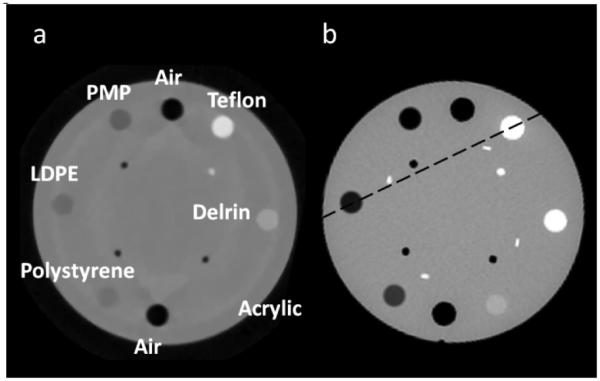Figure 9.

(a) A slice of an example CT image reconstructed with data from the completed Phase-II scanner: the CATPHAN 404 module, a cylinder of plastic with several cylindrical inserts of differing materials and empty cylindrical holes (air). The section also contains 4 thin wire ramps not visible in the pCT image. The data were collected for 90 stage orientations in 4 degree intervals, with about 3.2 million proton events collected at each angle. Only 51% passed through the reconstruction volume, and 32% of those were rejected by analysis cuts in the data processing. Finally, the 3-D image was reconstructed from 99.5 million proton histories, with a voxel size of 0.7 mm × 0.7 mm × 1 mm. (b) An X-ray CT slice from the same phantom, which shows the same features as the pCT image plus the 4 wire ramps, visible as short white lines. The dashed line corresponds to the profiles shown in Figure 11. Abbreviations: LDPE is low density polyethylene and PMP is polymethylpentene.
